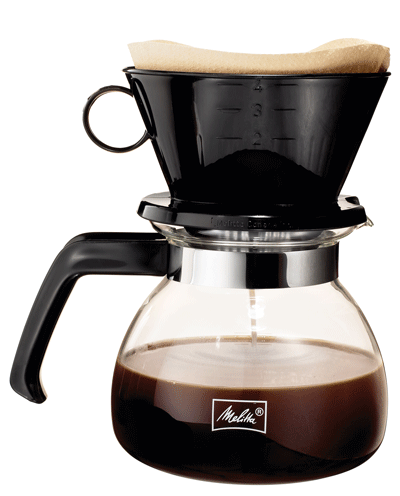
Law of Gravity
Among the countless ways to brew a cup of coffee, James Freeman, owner of San Francisco's Blue Bottle coffee shops, thinks the old-fashioned drip method is the best. "Preparing coffee the simplest possible way—filter, cup, kettle, hot water, grounds," explains Freeman, "is elemental and satisfying, like cooking over an open flame." The resulting cup, Freeman says, is more satisfying than coffee made with other methods, such as the French press, because the filter removes particles from the brew, producing a cleaner flavor."
Freeman and other drip coffee fans have a Dresden housewife named Melitta Bentz to thank for it. At a trade fair in Leipzig, Germany, in 1909, Melitta Bentz caused a stir with coffee filters made from blotting paper taken from her son's school supplies. Prior to Bentz's innovation, "most people simply boiled their coffee, which overextracts and turns the brew bitter," explains the coffee historian Mark Prendergrast. Not only that, but removing the grit from the coffee proved difficult. In Bentz's solution, brewed coffee passed through the filter from a grounds-catching brass cup into a porcelain pot, drop by drop, and the filters produced a mellow, smooth brew. Drip coffee was born.
Now, as the filter celebrates its centennial, drip coffee is still going strong and even enjoying a renaissance. In the United States alone, Melitta, the company Bentz started, still makes 10 million filters a day, and other drip products are gaining adherents. Many embrace the Chemex brewing system, invented 68 years ago by the German chemist Peter J. Schlumbohm, which uses a thick paper filter and an hourglass-shaped glass flask. James Freeman of Blue Bottle is touting ultrafine hemp-based paper filters and a Japanese drip brewer called the Nel—short for flannel—which filters coffee through a flannel-cloth sack, producing a "shinier"-tasting, thicker brew. "It's life changing," he gushes. That's probably what they said to Melitta Bentz.
Keep Reading
Continue to Next Story










